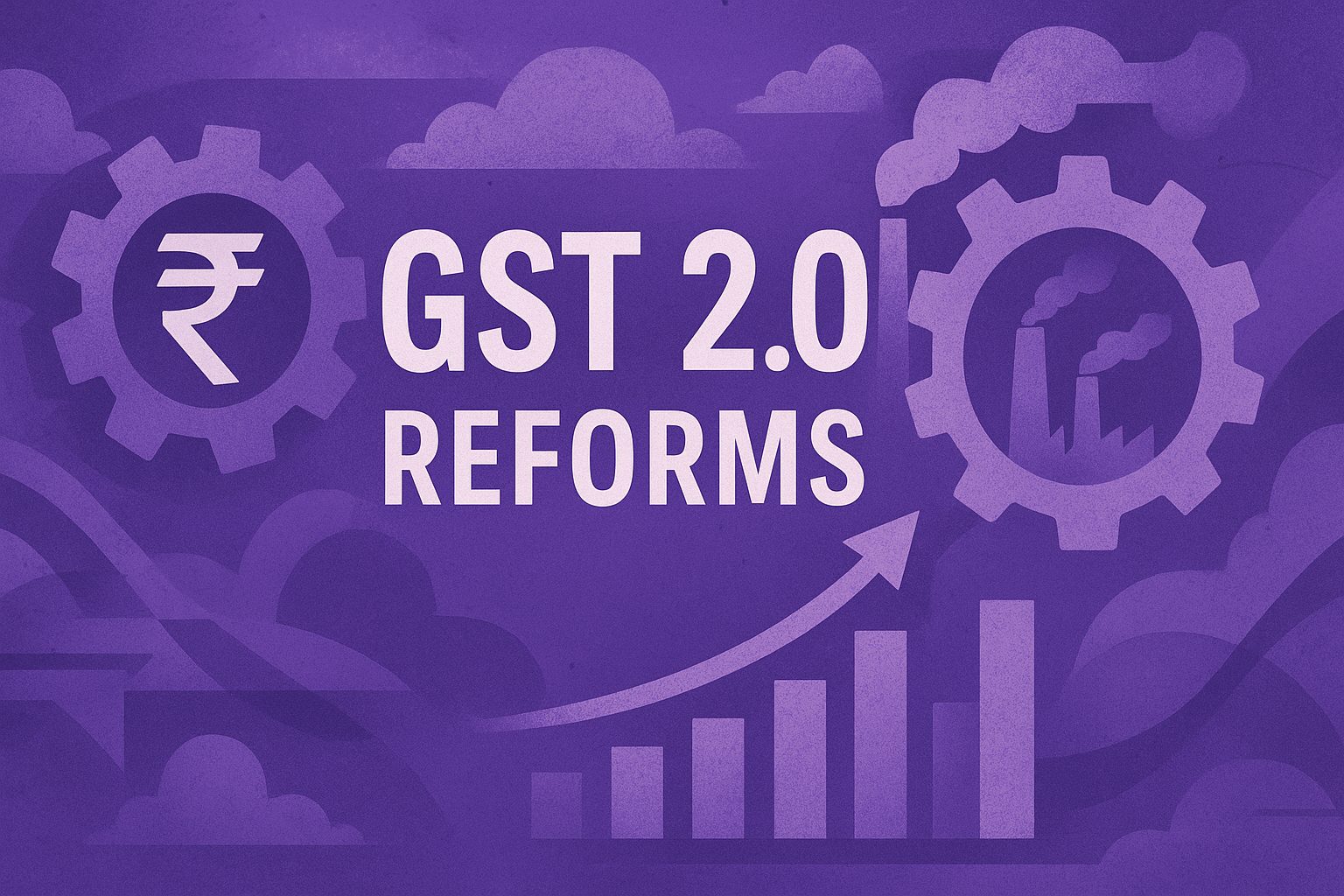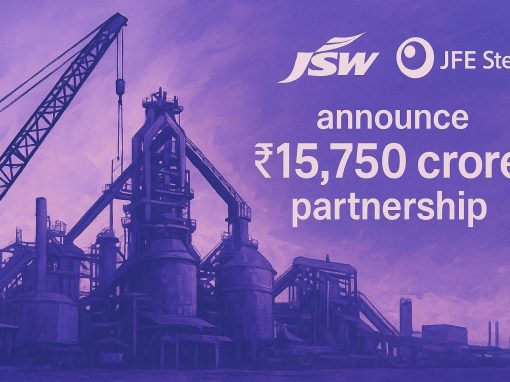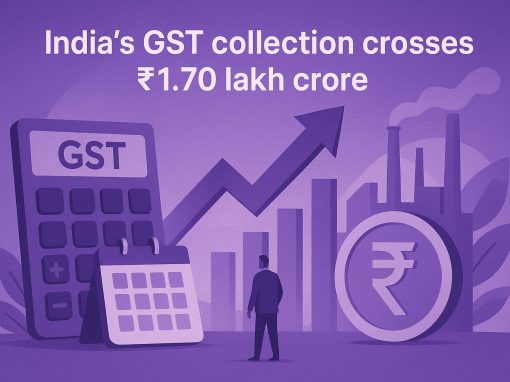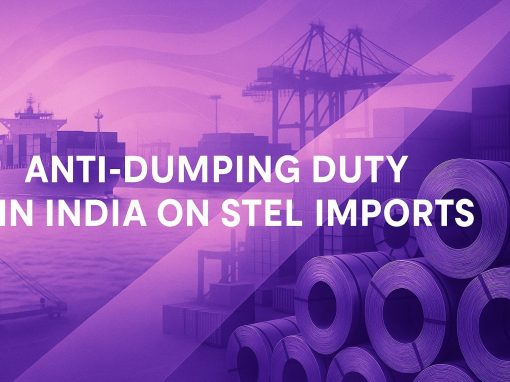Table of Contents
The Goods and Services Tax is a transformative tax reform that has reshaped the Indian economy. Introduced in 2017, GST subsumed numerous indirect taxes, thus creating a unified tax structure across the country. For MSMEs, understanding the nuances of GST is crucial, as it directly impacts business operations, compliance, and financial health. This guide will walk you through the essentials of GST levy and collection, with a particular focus on its implications for MSMEs.
Understanding GST Tax Levy
The levy of GST refers to the imposition of tax on the supply of goods and services in India. This taxation mechanism is a key aspect of the Goods and Services Tax (GST) system, governed by the Central Goods and Services Tax (CGST) Act, State Goods and Services Tax (SGST) Act, and Integrated Goods and Services Tax (IGST) Act.
Under GST, tax is applied whenever goods or services are supplied, whether within the same state or across state borders. The rates of GST vary depending on the type of goods or services being provided, ranging from 0% to 28%. A cess is also imposed in addition to GST, particularly on luxury goods and some items in some cases.
Understanding these rates is essential, especially for MSMEs as they directly affect pricing strategies, market competitiveness, and overall profit margins. Awareness and proper application of GST rates can make a significant difference in the financial health of MSMEs.
Types of GST Levies
GST is divided into four distinct levies, each applicable under specific circumstances:
- Central GST (CGST): Imposed by the Central Government on the supply of goods and services within a single state.
- State GST (SGST): Charged by the State Government on intra-state supplies, working alongside CGST.
- Integrated GST (IGST): Applied to inter-state transactions and imports, with the revenue shared between the Central and State Governments.
- Union Territory GST (UTGST): Functions similarly to SGST but is specific to Union Territories.
For instance, if a Micro, Small, and Medium Enterprise in Maharashtra supplies goods within the state, both CGST and SGST will be applicable. Conversely, if the goods are supplied to another state, IGST will be charged. Understanding these types of GST levies is crucial for MSMEs to ensure compliance with tax regulations and avoid any potential penalties.
Collection of GST
The collection of Goods and Services Tax (GST) in India involves a systematic process that ensures the efficient transfer of tax from consumers to the government. Below is an overview of how GST is collected:
1. Point of Sale Collection
GST is collected at the point of sale or service delivery. When a business sells goods or services, it adds the applicable GST to the selling price, which the consumer pays. The GST rate depends on the specific type of goods or services, as determined by the government.
2. Types of GST
Different types of GST are collected based on the nature of the transaction, including:
- CGST (Central GST)
- SGST (State GST)
- IGST (Integrated GST)
- UTGST (Union Territory GST)
3. Invoice Generation
For every taxable supply, a GST invoice is issued, detailing the amount of GST charged. This invoice is a crucial document for both the seller and buyer, aiding in compliance and the claiming of Input Tax Credit (ITC).
4. Filing of GST Returns
Businesses are required to file GST returns regularly (monthly or quarterly) through the GST portal. These returns must include comprehensive details of sales, purchases, and GST collected, ensuring accurate reporting and remittance of taxes to the government.
5. Remittance to Government
After filing returns, businesses must remit the collected GST to the government. This remittance is typically completed electronically via the GST portal, enhancing efficiency and transparency.
6. Input Tax Credit (ITC)
Businesses can claim Input Tax Credit on the GST paid for their purchases. This allows them to deduct the GST paid on inputs from the GST collected on sales, thereby lowering their net tax liability. The ITC mechanism ensures that GST is only paid on the value added at each stage of the supply chain.
7. Compliance and Audits
To ensure adherence to GST laws, the government conducts regular audits. Businesses must maintain accurate transaction records and be ready for audits, which helps uphold the integrity of the GST system.
This structured approach to GST collection ensures that the tax burden is distributed evenly across the supply chain. Understanding this process is crucial for businesses as it impacts cash flow and compliance responsibilities. The GST Network (GSTN) plays a pivotal role in facilitating this process, providing a platform for taxpayers to file returns, make payments, and manage compliance requirements effectively.
Understanding Section 9 of the CGST Act
Section 9 of the Central Goods and Services Tax (CGST) Act, 2017, plays a pivotal role in defining how GST is levied and collected on goods and services within India. Below is a simplified explanation:
Levy of GST (Sub-Section 1)
Section 9(1) specifies that GST is imposed on all intra-state supplies of goods and services, with the exception of alcoholic liquor for human consumption. The tax is levied at rates outlined in the schedules of the CGST Act, as recommended by the GST Council.
- Intra-State Supply: GST is applicable to transactions conducted within the same state.
- Exclusion: Alcoholic beverages are excluded from GST and are instead taxed separately under state laws.
- Taxable Value: GST is calculated on the transaction value, which includes all components except the GST itself.
Reverse Charge Mechanism (Sub-Section 3)
Section 9(3) introduces the Reverse Charge Mechanism (RCM), where the responsibility to pay GST shifts from the supplier to the recipient of goods or services. This mechanism is applicable to certain notified goods and services as specified by the government.
- Applicability: RCM is commonly used in sectors with unorganised or small-scale suppliers.
- Recipient’s Role: Under RCM, the recipient is accountable for ensuring GST compliance and making the payment.
GST on Unregistered Suppliers (Sub-Section 4)
Initially, Section 9 (4) required registered recipients to pay GST on goods or services purchased from unregistered suppliers under the reverse charge mechanism. However, this provision has been significantly narrowed and now applies only to specific cases as notified by the government.
- Unregistered Suppliers: Registered businesses might need to pay GST when purchasing from suppliers who are not registered under GST.
- Current Status: Due to amendments, this requirement has been largely limited to reduce the compliance burden on businesses.
Composition Levy (Sub-Section 5)
Section 9(5) allows the government to identify certain services where GST is to be collected and paid by E-commerce operators instead of the actual service providers. This is commonly seen in services provided through platforms like ride-hailing or lodging services.
- E-commerce Operators: Platforms such as Uber or OYO are responsible for collecting and remitting GST.
- Liability: The responsibility to pay GST falls on the E-commerce operator rather than the individual service provider.
GST 2.0 Reforms (Effective from September 22, 2025)
The GST 2.0 reforms, effective from September 22, 2025, have simplified India’s Goods and Services Tax structure, making compliance easier for MSMEs and businesses across sectors. Understanding these updates is crucial for managing tax liabilities and leveraging new benefits. Key changes include:
- New GST Slabs: The tax system now has three main rates – 5%, 18%, and 40%, streamlining the previous complex structure.
- Reduced Rates on Essentials: Items like soaps, toothpaste, and Indian breads now attract a lower GST of 5% or are exempted.
- Lower GST on Consumer Durables: TVs, ACs, and dishwashers have been reduced from 28% to 18%, benefitting manufacturers and retailers.
- Higher Tax on Luxury & Sin Goods: Pan masala, tobacco, aerated drinks, high-end cars, yachts, and private aircraft are now taxed at 40%.
- MSME-focused Compliance Measures: Increased limits for the Composition Scheme and introduction of the QRMP scheme make filing simpler and less frequent.
Increased Thresholds and Support Measures for MSMEs
The GST 2.0 reforms have introduced higher thresholds to make compliance easier for MSMEs. The Composition Scheme limit has been raised from ₹1.5 crore to ₹2 crore. In select states, the GST registration threshold for goods has increased from ₹40 lakh to ₹50 lakh, while the service sector threshold remains at ₹20 lakh.
Under the Quarterly Return Monthly Payment (QRMP) scheme, businesses with an annual turnover up to ₹5 crore can file GSTR-1 and GSTR-3B returns quarterly instead of monthly. This reduces the compliance burden and helps small businesses manage cash flow more effectively.
To support businesses dealing with the Inverted Duty Structure (IDS), the CBIC has directed field offices to provisionally sanction 90% of refund claims submitted on or after 1 October 2025. This measure speeds up the refund process and improves liquidity for affected businesses.
Here’s a simple step-by-step guide for MSMEs to register for the QRMP scheme and apply for provisional refunds:
Registering for the QRMP Scheme
- Log in to the GST Portal using your GSTIN credentials.
- Navigate to Services → Returns → Opt-in for QRMP Scheme.
- Select your tax period and turnover category (up to ₹5 crore annual turnover).
- Confirm the quarterly filing option for GSTR-1 and GSTR-3B.
- Submit the request. A confirmation message will appear, and quarterly return filing is activated.
Applying for Provisional Refunds Under Inverted Duty Structure (IDS)
- Log in to the GST Portal using your GSTIN credentials.
- Go to Services → Refunds → Application for Refund → Claims under IDS.
- Fill in details of input taxes paid, and sales made for which the refund is claimed.
- Submit supporting documents, such as invoices and payment proof.
- Submit the application. CBIC field offices will provisionally sanction 90% of eligible claims for faster processing.
Statistical Analysis
Let us look some key statistics which depict the impact of GST levy and collection on MSMEs:
- GST Compliance Rates:
Recent data reveals that the average GST compliance rate among MSMEs is approximately 85%. While this indicates a strong adherence to GST regulations, it also highlights the challenges faced by the remaining 15% of MSMEs. - Impact on Business Operations:
A survey conducted by the Federation of Indian Micro and Small & Medium Enterprises (FISME) found that 60% of MSMEs reported enhanced business transparency due to GST implementation. However, 40% of respondents noted a negative impact on their cash flow, thus underscoring the financial strain GST can impose. - Growth Post GST:
Since the introduction of GST, there has been a 20% increase in MSME registrations over the past three years. This growth reflects the streamlined tax compliance process, making it easier for businesses to register and operate within the formal economy.
These statistics underscore the dual nature of GST’s impact on MSMEs. While the GST tax levy and collection framework has improved transparency and reduced the overall tax burden, managing compliance and cash flow remains a significant challenge for many small and medium-sized enterprises.
GST Compliance for MSMEs
Ensuring GST compliance goes beyond merely following tax regulations, as it is also vital for maintaining smooth business operations. Here are some practical steps to help MSMEs stay compliant:
- Maintain Accurate Records: It’s essential to keep detailed records of all transactions, including invoices, receipts, and GST returns. Accurate record keeping makes it easier to file returns and respond to any inquiries from tax authorities, ensuring smooth compliance.
- Utilise GST Software: Leveraging technology can significantly simplify the GST compliance process. Various GST software solutions are available that automate tasks like return filing, e-invoicing, and tax calculations, thereby reducing the manual effort and minimising errors.
- Stay Updated with Legal Changes: GST laws are continually evolving, and staying informed about the latest changes is crucial for avoiding compliance issues. MSMEs can benefit from subscribing to newsletters or using GST advisory services to stay up to date with any legal amendments.
- File Returns on Time: Timely filing of GST returns is critical to avoid penalties and maintain good standing with tax authorities. MSMEs with a turnover below a certain threshold can opt for the quarterly filing scheme, which reduces the frequency of filings and eases the compliance burden.
GST Compliance Challenges for MSMEs
| Challenge | Solution/Update |
| Working Capital Constraints | MSMEs must pay GST before collecting from customers, straining cash flow. The QRMP scheme allows quarterly filing to ease pressure. |
| Access to Credit | Lack of formal records limits loan approvals. GST 2.0 improves transparency, making financial data more reliable for lenders. |
| Compliance Complexity | Understanding GST rates and filing returns is time-consuming for small businesses. Simplified GST slabs and support tools reduce this burden. |
| Technological Hurdles | Many MSMEs struggle with digital return filing and e-invoicing. Government initiatives and software solutions help streamline digital compliance. |
Conclusion
Understanding the levy and collection of GST is crucial for MSMEs operating within India’s tax framework. By staying informed and utilising technological tools, MSMEs can effectively manage these aspects of their business. The future of GST in India appears promising, with continued efforts to simplify compliance and lessen the burden on small enterprises. As MSMEs adapt to the evolving GST landscape, they can anticipate a more streamlined tax process that will support their growth and development.
*This article is for basic information only. For more in-depth knowledge regarding the topic please visit the official GST portal or consult with a GST practitioner, CA or relevant professional for more details on the GST levy and collection process.
Empowering MSMEs to grow smarter
Tata nexarc delivers powerful solutions for MSMEs—discover tenders, logistics solutions, and streamline procurement. Everything your business needs, all in one place.
FAQs
What is the tax levy of GST?
How is GST collected in India?
What are the different types of GST levies?
Who is responsible for collecting GST?
A product manager with a writer's heart, Anirban leverages his 6 years of experience to empower MSMEs in the business and technology sectors. His time at Tata nexarc honed his skills in crafting informative content tailored to MSME needs. Whether wielding words for business or developing innovative products for both Tata Nexarc and MSMEs, his passion for clear communication and a deep understanding of their challenges shine through.









RCM is a very good addition to the GST collection rules as it lessens the possibility of tax evasion by placing the responsibility of tax payment on receiver instead of supplier.
While GST has brought a lot of positives, I think the compliance burden is still high, especially for smaller enterprises with limited resources. Perhaps more exemptions could be considered to ease this pressure.